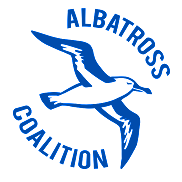
Author: Captain Charles J. Moore
In 1974, a member of the Council of the British Plastics Federation and a fellow of the Plastics Institute, stated that “Plastics litter is a very small proportion of all litter and causes no harm to the environment except as an eyesore”(Derraik, 2002). It has taken less than fifty years for that opinion to be completely discredited, indeed, that opinion was already in doubt the moment it was stated. Nevertheless, it was the strong denial by the plastic industry that plastics could cause harm that delayed the study of plastic’s environmental effects for decades. Not until Moore et al. (2001) found six times as much plastic as zooplankton by weight in the surface waters of the North Pacific Subtropical Gyre (NPSG), did plastic environmental pollution begin to receive increasing attention by scientists, policy makers, regulators, and the media, who began referring to the area as “The Great Pacific Garbage Patch”, a term coined by an oceanographer, Curtis Ebbesmeyer (Ebbesmeyer and Scigliano, 2009). Today it is widely acknowledged that vagrant plastic waste is polluting oceans, rivers, soil, food, the water we consume, and even the air we breathe. The invasion of this synthetic waste into organisms is facilitated by the fact that with surface ablation and disintegration mechanisms over time, micro- and nano- sized synthetic polymers are created that can be readily assimilated into living organisms. Recent studies reveal that these micro- and nano- scale polymers, which sorb and desorb pollutants, can pass through the intestinal wall and from the lungs to the circulatory system and in contact with human cells produce reactive oxygen species (ROS), which are implicated in many pathologies (Schirinzi et al., 2017). As primarily a marine scientist, I focus on the threats to marine ecosystems, but the topic of plastic pollution has grown to global proportions affecting not only the biosphere, but geological formations as well. Here I present a summary of the work done to date to understand our situation and discuss briefly the future of plastic pollution.
Continue Reading →

